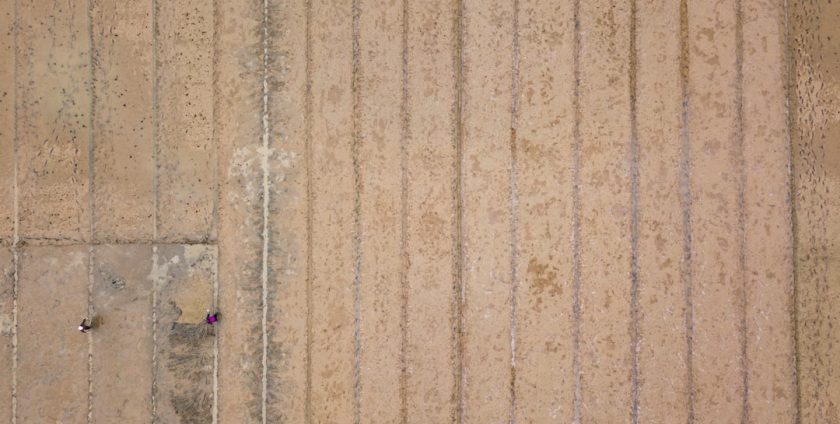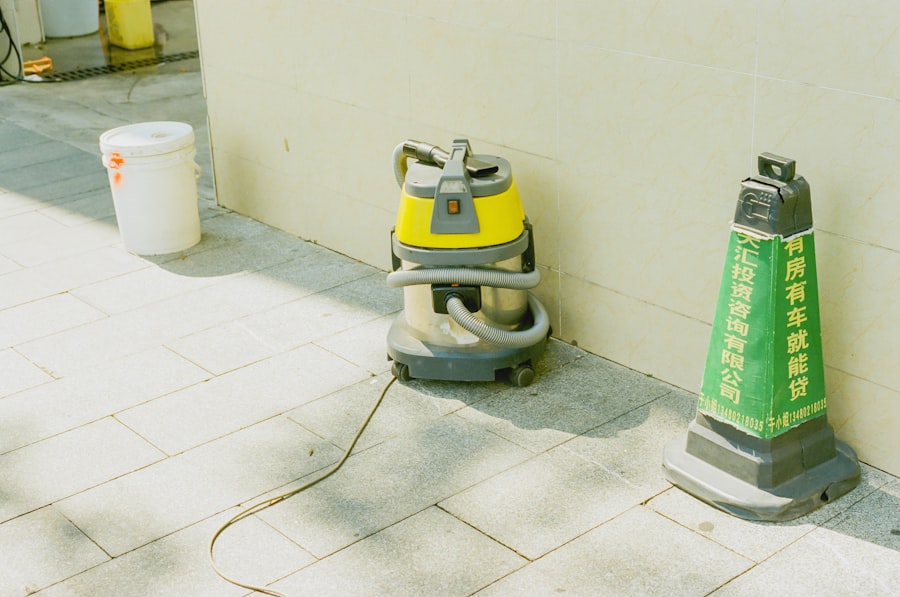
- By: admin
- Category: Commercial Floor Cleaning Machines
- 0 comment
Vinyl flooring has become a popular choice in commercial and industrial settings due to its durability, versatility, and cost-effectiveness. This synthetic flooring material is composed of polyvinyl chloride (PVC) and is available in a variety of styles, colours, and textures, making it suitable for a wide range of applications. From retail spaces to healthcare facilities, vinyl flooring can withstand heavy foot traffic while providing a comfortable surface for employees and customers alike.
Its water-resistant properties also make it an ideal choice for areas prone to spills or moisture, such as kitchens and bathrooms. Moreover, vinyl flooring is relatively easy to maintain compared to other flooring options. With the right cleaning techniques and equipment, facility managers and contract cleaners can keep these surfaces looking pristine for years.
Understanding the unique characteristics of vinyl flooring is essential for developing an effective cleaning strategy that preserves its appearance and longevity. This article will guide you through the best practices for cleaning vinyl flooring, ensuring that your commercial space remains inviting and professional.
Summary
- Vinyl flooring is a durable and low-maintenance option for commercial spaces
- Before cleaning, remove all furniture and debris from the vinyl flooring
- Choose commercial equipment such as a vacuum, mop, and scrubber suitable for vinyl flooring
- Sweep or vacuum the vinyl flooring to remove loose dirt and debris
- Mop the vinyl flooring using a mild cleaning solution and water, then allow it to air dry
Preparing the Vinyl Flooring for Cleaning
Before diving into the cleaning process, it is crucial to prepare the vinyl flooring adequately. This preparation phase sets the stage for effective cleaning and helps prevent damage to the flooring material. Start by removing any furniture, equipment, or obstacles from the area to ensure unobstructed access to the entire surface.
This not only makes the cleaning process more efficient but also allows for a thorough inspection of the flooring for any signs of damage or wear. Once the area is clear, it’s essential to conduct a preliminary inspection of the vinyl flooring. Look for any loose tiles, cracks, or other imperfections that may require attention before cleaning.
Addressing these issues beforehand can prevent further damage during the cleaning process. Additionally, ensure that you have all necessary cleaning supplies and equipment on hand, as this will streamline your efforts and help you avoid interruptions during the cleaning session.
Choosing the Right Commercial Equipment

Selecting the appropriate commercial equipment is vital for achieving optimal results when cleaning vinyl flooring. The right tools not only enhance efficiency but also ensure that the flooring is cleaned without causing damage. For basic maintenance, a high-quality vacuum cleaner designed for hard surfaces is essential.
Look for models with strong suction power and soft brushes to avoid scratching the vinyl surface. In addition to vacuuming equipment, consider investing in a commercial-grade mop and bucket system. Microfibre mops are particularly effective for vinyl flooring as they trap dirt and grime without leaving streaks or residue behind.
For more intensive cleaning tasks, such as removing stubborn stains or built-up grime, a floor scrubber may be necessary. These machines come in various sizes and styles, so choose one that suits your specific needs and the size of your facility.
Sweeping and Vacuuming the Vinyl Flooring
The first step in the actual cleaning process involves sweeping and vacuuming the vinyl flooring to remove loose dirt, dust, and debris. Begin by using a broom or dust mop to gather larger particles from the surface. This initial step is crucial as it prevents dirt from becoming embedded in the flooring during subsequent cleaning stages.
After sweeping, it’s time to bring out the vacuum cleaner. A vacuum specifically designed for hard surfaces will effectively pick up any remaining dust and fine particles that may have been missed during sweeping. Pay special attention to corners and edges where dirt tends to accumulate.
Mopping the Vinyl Flooring
Once the loose debris has been removed, it’s time to mop the vinyl flooring. Mopping is an essential step in maintaining cleanliness and hygiene in commercial spaces. Begin by filling a bucket with warm water and adding a suitable vinyl floor cleaner according to the manufacturer’s instructions.
It’s important to use a cleaner specifically formulated for vinyl flooring to avoid damaging the surface.
Too much water can seep into seams or edges, potentially causing damage over time.
Work in small sections, mopping in a figure-eight motion to ensure even coverage without leaving streaks behind. After mopping each section, rinse the mop frequently in clean water to avoid redistributing dirt back onto the floor.
Using a Scrubber for Tough Stains

Despite regular maintenance, tough stains may occasionally appear on vinyl flooring due to spills or heavy foot traffic. In such cases, using a floor scrubber can be an effective solution for restoring the floor’s appearance. Floor scrubbers are designed to tackle stubborn stains with ease while ensuring that the integrity of the vinyl is maintained.
Before using a scrubber, it’s essential to identify the type of stain you’re dealing with. For example, grease stains may require a different approach than those caused by ink or food spills. Once you’ve determined the appropriate cleaning solution for your specific stain type, set up your scrubber according to the manufacturer’s instructions.
Move slowly over stained areas, allowing the machine to do its work without applying excessive pressure that could damage the flooring.
Applying Floor Polish or Sealant
After thoroughly cleaning your vinyl flooring, applying a floor polish or sealant can enhance its appearance and provide an additional layer of protection against wear and tear. Floor polish creates a glossy finish that not only improves aesthetics but also helps resist scuff marks and scratches from foot traffic. Before applying polish or sealant, ensure that the floor is completely dry after cleaning.
Follow the manufacturer’s instructions regarding application techniques and drying times. Typically, you will need to use a clean mop or applicator pad to spread an even layer of polish across the surface. Allow sufficient time for each coat to dry before applying additional layers if necessary.
Regularly polishing your vinyl flooring can significantly extend its lifespan while keeping it looking fresh and vibrant.
Drying and Inspecting the Cleaned Vinyl Flooring
Once you have completed the cleaning process and applied any necessary polish or sealant, it’s crucial to allow adequate drying time before allowing foot traffic back onto the surface. Depending on environmental conditions such as humidity and temperature, drying times may vary; however, it’s generally advisable to wait at least 30 minutes to an hour before resuming normal activities. While waiting for the floor to dry, take this opportunity to conduct a thorough inspection of the cleaned area.
Look for any missed spots or areas that may require additional attention. This proactive approach ensures that your vinyl flooring remains in top condition and helps identify any potential issues early on.
Maintaining the Cleaned Vinyl Flooring
Maintaining cleaned vinyl flooring is essential for preserving its appearance and longevity over time. Establishing a regular cleaning schedule can help keep dirt and grime at bay while preventing build-up that could lead to more intensive cleaning sessions down the line. Depending on foot traffic levels in your facility, consider sweeping or vacuuming daily while mopping weekly or bi-weekly.
In addition to routine cleaning, be mindful of any spills or stains that occur during daily operations. Addressing these issues promptly can prevent them from becoming permanent marks on your flooring. Encourage staff members to report any spills immediately so they can be dealt with effectively before they have a chance to set in.
Safety Precautions when Using Commercial Equipment
When using commercial equipment for cleaning vinyl flooring, safety should always be a top priority. Ensure that all staff members are trained in proper equipment usage and understand how to operate machines safely. This includes familiarising themselves with any safety features or emergency shut-off mechanisms present on equipment.
Additionally, always wear appropriate personal protective equipment (PPE) when handling cleaning chemicals or operating machinery. This may include gloves, goggles, or masks depending on the products being used. Furthermore, ensure that work areas are well-ventilated during cleaning processes involving chemicals to minimise exposure risks.
Hiring Professional Help for Vinyl Flooring Cleaning
While regular maintenance can go a long way in keeping vinyl flooring looking its best, there may be times when hiring professional help is necessary. Professional cleaners possess specialised knowledge and equipment that can tackle deep cleaning tasks more effectively than standard methods. Consider enlisting professional services if your facility experiences heavy foot traffic or if stains persist despite your best efforts at home maintenance.
Professionals can provide tailored solutions based on your specific needs while ensuring that your vinyl flooring receives the care it deserves. In conclusion, maintaining clean vinyl flooring in commercial settings requires a combination of proper preparation, effective cleaning techniques, and ongoing maintenance practices. By understanding how to care for this versatile material effectively, facility managers and contract cleaners can ensure their spaces remain welcoming and professional while extending the life of their flooring investment.
FAQs
What is vinyl flooring?
Vinyl flooring is a synthetic flooring material that is durable, water-resistant, and easy to maintain. It is commonly used in commercial and residential spaces due to its affordability and versatility.
Why is it important to clean vinyl flooring with commercial equipment?
Cleaning vinyl flooring with commercial equipment ensures a thorough and effective cleaning process. Commercial equipment is designed to handle the demands of high-traffic areas and can remove tough stains and dirt more efficiently than household cleaning tools.
What commercial equipment can be used to clean vinyl flooring?
Commercial equipment for cleaning vinyl flooring may include floor scrubbers, wet/dry vacuums, steam cleaners, and specialised vinyl floor cleaning solutions. These tools are designed to provide deep cleaning and sanitisation without damaging the vinyl surface.
How often should vinyl flooring be cleaned with commercial equipment?
The frequency of cleaning vinyl flooring with commercial equipment depends on the level of foot traffic and the type of commercial space. In general, high-traffic areas may require daily or weekly cleaning, while low-traffic areas may be cleaned less frequently.
What are the benefits of using commercial equipment to clean vinyl flooring?
Using commercial equipment to clean vinyl flooring offers several benefits, including efficient removal of dirt and stains, improved hygiene and sanitation, extended lifespan of the flooring, and a professional appearance for commercial spaces.
